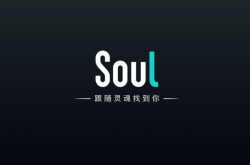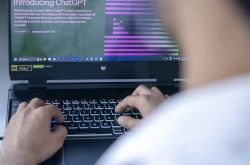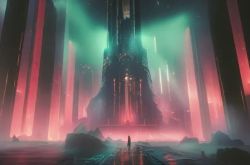Revolutionizing US Military Night Operations: Mobile Phone Cameras After a Century
![]() 03/20 2025
03/20 2025
![]() 854
854
Opportunities and Challenges Converge
The US Department of Defense is actively seeking technology firms in Silicon Valley.
In February of this year, Silicon Valley AI startup Deepnight announced the completion of a $5.5 million seed round led by Initialized Capital, with participation from Y Combinator (YC). This news quickly garnered significant industry attention, as Deepnight, a mere year-old company, is the first and only one to apply AI software to military night vision. Currently, Deepnight has signed contracts worth approximately $4.6 million with the US federal government (including the US Army and Air Force) as well as companies like Sionyx and SRI International.
Industry insiders predict that with its innovative AI night vision software, Deepnight is poised to disrupt the traditional night vision equipment market, valued at tens of billions of dollars, and carve out a niche in the military night vision sector.
Furthermore, the company's key figures have garnered external attention—two Chinese-American engineers with Google backgrounds: Lucas Young and Thomas Li.
Their story is not just a tale of entrepreneurship by Silicon Valley tech enthusiasts but also a microcosm of how Chinese engineers are making breakthroughs in the global technology landscape.

AI vs. Traditional Optics: A "Dimensional Strike" on Performance and Cost
Traditional night vision devices primarily rely on analog technology, converting weak nighttime light into images through optical lenses and chemical processes. This analog process is susceptible to issues like light information loss and "halo" effects under strong light sources.
More importantly, these night vision devices are exceedingly expensive. In the military night vision industry, giants like L3Harris and BAE Systems have established formidable barriers through patent protections and military standards certifications, driving up the prices of military night vision equipment. Typically, these military contractors produce night vision equipment priced between $13,000 and $30,000.
For years, the US Army has been attempting to transition night vision equipment from analog to digital technology, with a notable example being the $22 billion "Integrated Visual Augmentation System (IVAS)" project.
So, what makes Deepnight so appealing to the military?
Put simply, Deepnight's advantage lies in its ability to achieve exceptional real-time night vision effects using an ordinary $50 smartphone camera combined with AI algorithms. Behind this lies several key strengths of Deepnight.
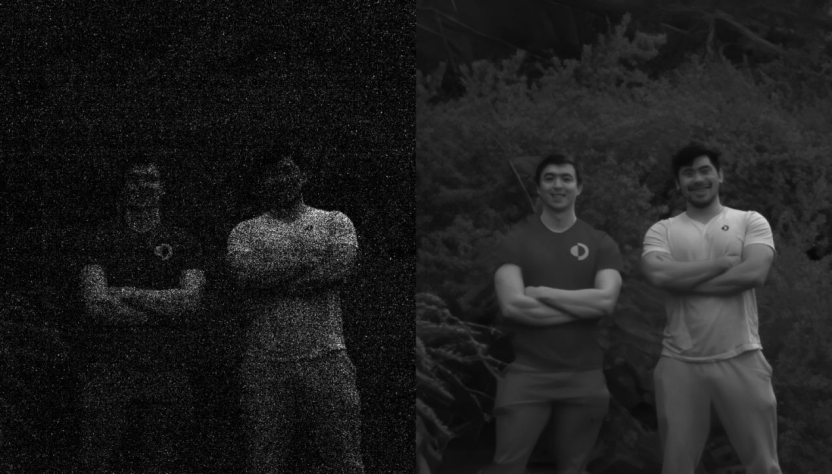
Note: On the left is a photo taken at night using an ordinary camera by the founder of Deepnight, and on the right is a photo taken by the company's AI model.
The first is AI.
Deepnight's AI model, through deep learning of vast low-light scenes, can generate high-resolution images under extremely low light conditions, outperforming traditional military night vision equipment like L3Harris.
The second is cost.
Seeing in near-total darkness usually requires specialized and costly hardware, such as $3,000 image intensifier tubes, thermal imagers, and infrared cameras, which are also power-hungry solutions. According to Lucas, they can see everything in the dark world, all relying on an off-the-shelf $50 smartphone camera, without the need for expensive custom hardware.
Additionally, Deepnight provides software that enables any hardware device with a camera to gain night vision capability. This means it can be directly deployed on existing military equipment without additional replacement costs.
However, relying solely on technological and cost advantages does not guarantee securing large military contracts. Deepnight's success also hinges on the determination and resilience of its two Chinese-American founders, Lucas Young and Thomas Li.

Technical Conviction and Strategic Resilience of the Chinese-American Founding Team
Lucas and Thomas grew up together in New Jersey and have maintained contact. Both of their subsequent career paths have been inextricably linked to visual technology.
Lucas attended the California Institute of Technology to study computational photography, where he spent five years researching smartphone camera software. For instance, he wrote code to overcome the small aperture limitation of inexpensive $50 digital cameras. Later, Lucas joined Google to research edge computer vision.
Thomas chose to study AI and computer vision at Carnegie Mellon University and later joined Google to work on machine learning systems.
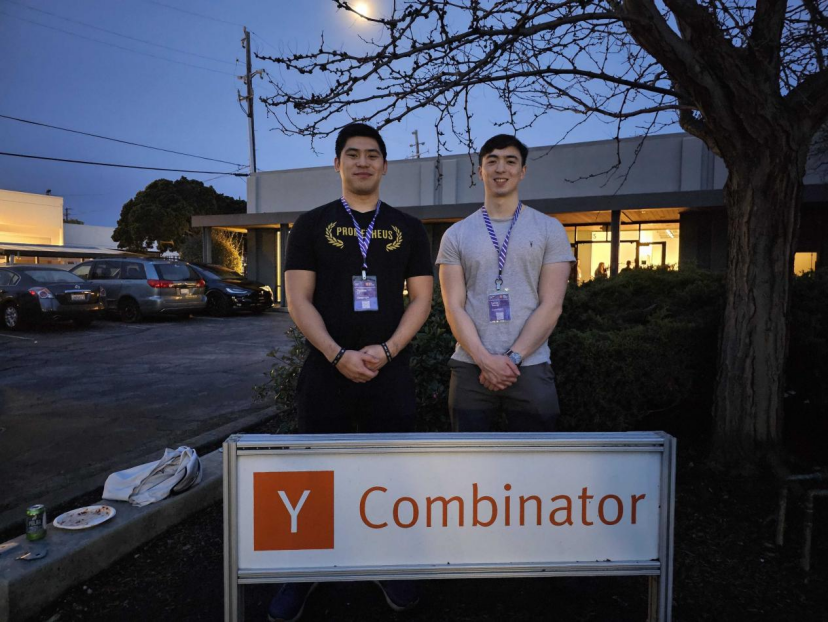
Note: Thomas (left) and Lucas (right)
Both worked at Google, and this shared experience not only deepened their technical rapport but also planted the seeds of entrepreneurship—they discovered that the potential of AI in the visual field was far from fully tapped.
In 2018, Lucas read a paper titled "Learning to See in the Dark," which discussed using AI for low-light imaging. Lucas was excited, believing it overturned the physical limitations of optics.
However, at that time, AI chips on devices were not fast enough to support the 90 frames per second (fps) required for real-time viewing. If Lucas had given up on researching low-light imaging at that time, there might not have been Deepnight later.
In 2024, Lucas realized that AI accelerators running on system-on-chips (SoCs) were advanced enough to support 90 fps. He convinced Thomas to quit his job, and the two founded a startup called Deepnight, which soon entered the Y Combinator Winter Batch.
After joining YC, under the guidance of mentors, the Deepnight team employed some "unconventional" methods to successfully engage with the military.
Since Deepnight could not directly approach the Pentagon to discuss military cooperation, Lucas found an industry event attended by personnel from the US Army Night Vision Laboratory. He prepared a white paper outlining his idea in advance:
"Night vision is a software problem."
Lucas distributed many copies of the white paper at the event, and one was read by a colonel in the Army who agreed to read it. He later recalled, "It was just a hallway conversation, and I wasn't even wearing business attire, just a T-shirt."
The colonel was highly impressed with what Lucas presented and put him in touch with laboratory personnel. To prove the feasibility of his idea to these personnel, Lucas and Thomas developed a night vision smartphone application. They placed a smartphone into a VR device that could accommodate it and then demonstrated the basic prototype. Although it was just a prototype, it made a lasting impression on the personnel of the US Army Night Vision Laboratory, leading to Deepnight's first cooperation with the US military.
Lucas and Thomas embody certain characteristics of Chinese entrepreneurs. For example, they hold a pragmatic view of technology, avoiding heavy investment in hardware and focusing on lightweight algorithms; they maintain the patience and tenacity of Eastern engineers while being well-versed in Silicon Valley's rules of the game.

Looking Ahead: Opportunities and Challenges Abound
In the future, opportunities and challenges will coexist for Deepnight.
Law enforcement agencies in many countries around the world are increasingly adopting night vision equipment for training activities, and many countries are also significantly increasing their military and defense budgets, which will drive the development of the night vision equipment market.
According to Mordor Intelligence data, the night vision equipment market was valued at $9.66 billion in 2024 and is expected to reach $14.19 billion by 2029, with a compound annual growth rate of 7.98% during the forecast period (2024-2029).
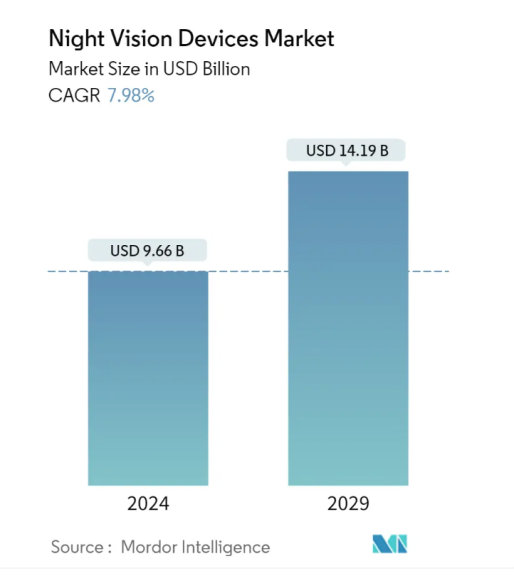
Note: Night vision equipment market size
For Deepnight, AI software capable of providing high-resolution images in low-light conditions is not only applicable to the military field but also has the potential to transform multiple industries such as security, agriculture, and environmental research. Additionally, Deepnight's software solutions are compatible with various hardware devices, including smartphones, goggles, drones, etc., giving their products broad application prospects.
It can be said that Deepnight not only brings new possibilities to night vision technology but also provides new ideas for the application of AI in traditional hardware fields. This has also attracted many investors. In addition to lead investor Initialized Capital, Deepnight's funding list includes angel investors like Kulveer Taggar, former In-Q-Tel partner Brian Shin, and Muse band lead singer Matthew Bellamy.
Of course, Deepnight also faces some challenges.
In the face of extreme environments (sand and dust, electromagnetic interference) in military scenarios, the performance and adaptability of Deepnight's AI software still need to be verified. Additionally, the competition in the night vision equipment market is fierce, and it remains to be seen whether it can cope with competition from industry giants in the future.
The story of Deepnight is essentially the resonance of two waves of the times.
On the one hand, AI is moving from "data fitting" to "physical reconstruction," beginning to solve physical problems in hardware fields, and Deepnight is riding this trend.
On the other hand, Chinese entrepreneurs are frequently emerging in this AI boom. According to ITJuzi data, as of the end of last year, there were 70 artificial intelligence companies founded by former Google employees who are Chinese.
At the intersection of these two waves of the times, how significant an impact Deepnight can make remains to be seen over time.

